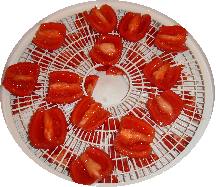I love canning. I think it is a great way to save money! If you have a garden, the only cost of canning is the jar. I also think the flavor and quality of home canned foods are often superior to store purchased foods. However, home canning must be safe as to not get you and your loved ones sick. The following resource comes from Kathleen Riggs, USU Family and Consumer Sciences Agent, Iron County:
Major Canning Mistakes – Potentially Deadly
*Making up your own canning recipe. Without scientific testing, you will not know how long the product needs to be processed to be safe.
*Adding EXTRA starch, flour or other thickener to recipe. This will slow the rate of heat penetration into the product and can result in undercooking.
*Adding EXTRA onions, chilies, bell peppers, or other vegetables to salsas. The extra vegetables dilute the acidity and can result in botulism poisoning.
*Using an oven instead of water bath for processing. The product will be under-processed since air is not as good a conductor of heat as water or steam. The jars also may break or explode.
*Not making altitude adjustments. Since boiling temperatures are lower at higher altitudes, the products will be under-processed. Pressure canning requires adding more pounds of pressure while waterbath canning requires more processing time.
*Not venting pressure canner. Lack of venting can result in air pockets (cold spots) which will not reach as high a temperature as is needed.
*Not having dial-type pressure canner gauges tested annually. If the gauge is inaccurate, the food may be under-processed and therefore unsafe.
*Failure to acidify canned tomatoes. Not all tomatoes have an adequate acid level (pH), especially if the vine is dead when tomatoes are harvested. This can result in botulism poisoning.
*Cooling pressure canner under running water. Calculations as to processing time include the residual heat during the normal cool-down period as part of the canning process. Hurrying this process will result in under-processed food; siphoning of liquid from the jars and jar breakage may also occur.
*Letting food prepared for “hot pack” processing cool in the jars before placing them in the canner for processing. The heat curves are based on the food being hot at the beginning of the processing. The product could be under-processed. NOTE: Canned meat, vegetables, or salsa which is under-processed can cause botulism.
Minor Canning Mistakes – Economic Loss, But Results Not Deadly
*Use of mayonnaise jars. The thinner walls of the glass may break, especially if used in a pressure canner, and it may be more difficult to obtain a good seal. However, if it seals, it is safe to use.
*Use of paraffin on jams & jellies. Small air holes in the paraffin may allow mold to grow. Also, paraffin can catch on fire if overheated during preparation. If preserves do have mold growth, the recommendation is not to eat the product, but discard it.
*Cooling too slowly after removing from canner. (Example: stacked jars close together.) There is a group of harmless organisms called thermophiles that can survive canning. If bottles are held hot for long periods, they can produce acid (fermentation). This results in the defect known as “flatsour.” This is harmless, but produces an undesirable flavor.
*Storing food longer than recommended. Keeping foods longer than recommended or storing them at temperatures above 70° F for an extended period of time will decrease the quality and the value of some nutrients, but the product will be safe to eat. A darkening of fruits and change in texture is often a result as well.
The general guidelines for safe food preservation really are not difficult to follow. Just make certain to always use an up-to-date, scientifically-tested recipe, follow it exactly and make the altitude adjustments for time or pressure. If you have specific questions, contact your local USU Extension office. If you cannot find your local office listed in the phone directory under USU, look under the county government listings.
Cautions Issued for Specific Foods
• Butter — For now, canning butter using any method is not recommended. Some methods are dangerous at best; others are not backed by science.
• Hydrated wheat kernels (berries) — Starch in wheat may interfere with the heat penetration during canning. Insufficient processing can result in botulism food poisoning. Wheat should be stored dry until use or refrigerated up to several days if hydrated for use in the near future.
• Quick Breads (e.g. , banana, zucchini, pumpkin) — Baking quick breads in canning jars and then placing a lid and ring on the jar to create a vacuum seal as it cools does not kill botulism-forming organisms that grow in warm, moist, anaerobic conditions. These items should be either baked fresh and served or frozen.
• Dried Beans (pinto, kidney, etc.) — To safely can dried beans, they must be hydrated first (usually 12 to18 hours) and then brought to a boil for 30 min. Hot beans are then placed into hot jars for processing.







 Pressure Canners
Pressure Canners

